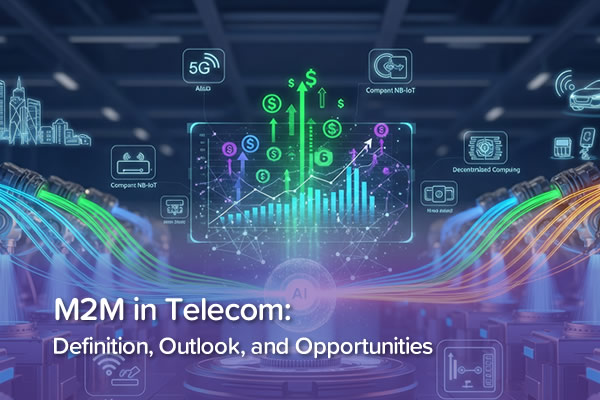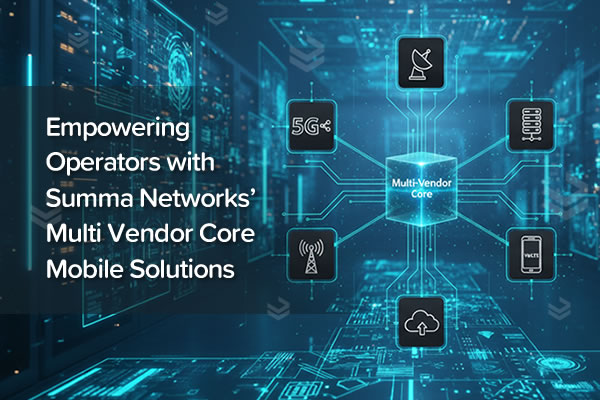The latest news and insights

M2M in Telecom: Definition, Outlook, and Opportunities
Machine-to-Machine (M2M) communication refers to the automatic exchange of data between devices without human intervention, typically over telecom networks. It underpins many Internet of Things (IoT) applications, enabling devices like smart meters, industrial sensors, fleet trackers, and connected vehicles to share information in real time.
While M2M and IoT are closely related, there is a distinction: M2M focuses on direct device-to-device communication, whereas IoT encompasses a broader ecosystem that integrates M2M with internet connectivity, analytics, and user-facing applications.
The telecom challenge lies in monetizing M2M traffic. Unlike traditional mobile services, where ARPU (average revenue per user) can be high, M2M connections often yield only a few cents per month. This low-margin model demands highly efficient, scalable, and cost-effective network infrastructure.
Market Outlook
The M2M market is set for steady growth, driven by 5G, NB-IoT, edge computing, and AI-powered analytics. These technologies are enabling advanced use cases across smart cities, autonomous mobility, industrial automation, and healthcare. Asia-Pacific leads adoption, followed by North America and Europe, with all regions investing in interoperability, security, and sustainability.
Summa Networks and M2M
Summa Networks addresses M2M’s operational and commercial challenges with its carrier-grade NextGen HSS/HLR, fully compliant with 3GPP standards. This solution supports both traditional mobile subscribers and M2M devices in unified or dedicated architectures, helping operators simplify operations, avoid infrastructure duplication, and adapt pricing to low-ARPU models—ensuring long-term efficiency and profitability in the evolving M2M landscape.
Latest Blog

Empowering Operators with Summa Networks' Multi Vendor Core Mobile Solutions


